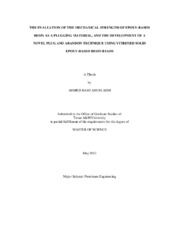| dc.description.abstract | Over the past several years, some of the platforms in the Gulf of Mexico have been damaged completely, such that conventional P&A operations may not be possible. In these cases, plugging fluid needs to be pumped through an intervention well and dropped several thousand feet in water to settle above a packer and seal the well.
The current P&A material of choice is cement, but cement is miscible in water, which dilutes and contaminates the cement. Therefore, alternate plugging materials need to be used for these operations. This paper discusses the development of a cost-effective Epoxy P&A method and the challenges of using Epoxy. First, the impact of seawater, oil, and pipe dope on the curing process remains unknown. Secondly, the yield strength of Epoxy with and without the contaminating chemicals must be equal to or better than cement. Finally, previous tests have shown significant losses of Epoxy to the walls of the wellbore during the 7,000-ft drop.
2
High temperature curing and compression tests were performed on contaminated epoxy samples to determine the effectiveness of the epoxy plug. To reduce material losses, an improved method for introducing the epoxy into the target zone was developed. This method takes advantage of a narrow window in the cure process where the curing process can be suspended by quenching the partially cured liquid epoxy in water at room temperature, thereby changing the liquid epoxy into solid beads. The beads can then be pumped into the wellbore, where they liquefy at wellbore temperature, 200°F, then cure into a solid plug.
Seawater was found to accelerate the cure time, while all contaminants tested reduced the fracture strength by more than 25% compared to pure resin. The yield strengths of contaminant mixtures, however, remained relatively constant, with the greatest drop being only 11%. The use of solid epoxy beads was found to have a compressive strength 50% greater than Portland cements I&II. In addition, the application mentioned herein eliminates the need to prepare the plug material on site. These advantages greatly contribute to reducing the costs of an epoxy P&A operation, to potentially being USD 0.7 million cheaper than a Portland cement operation. | en |


